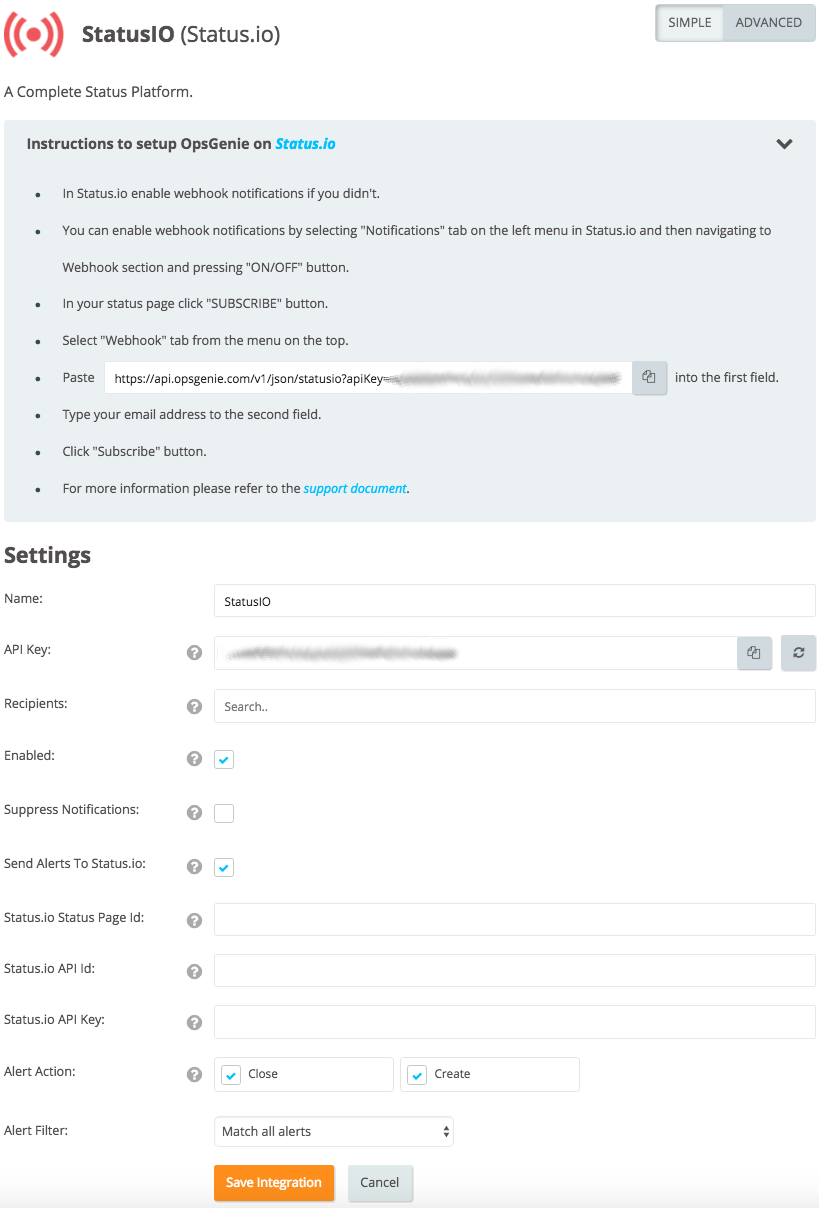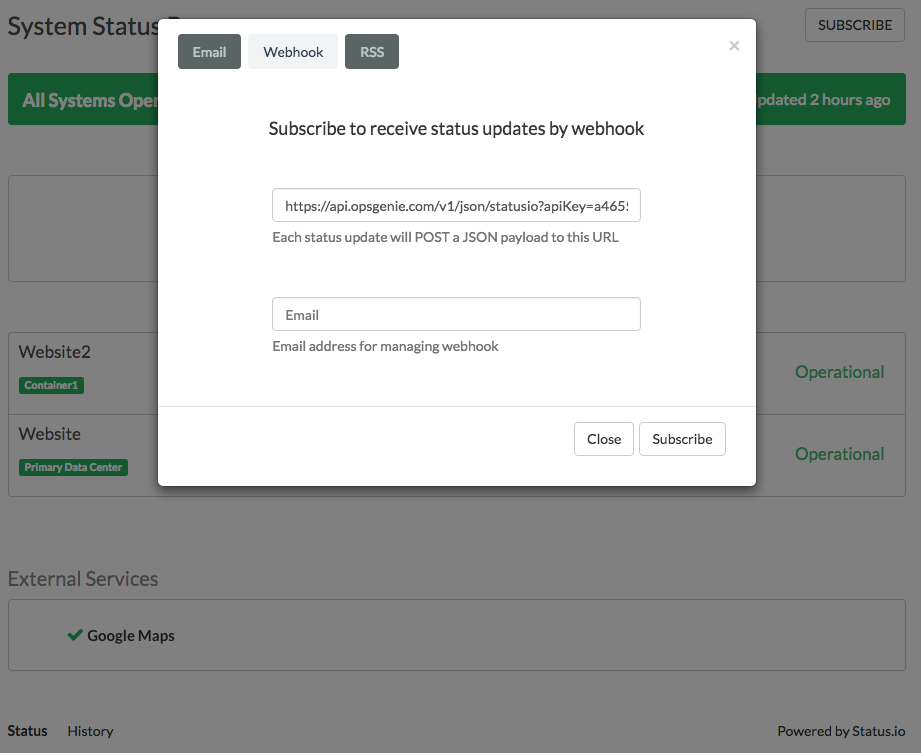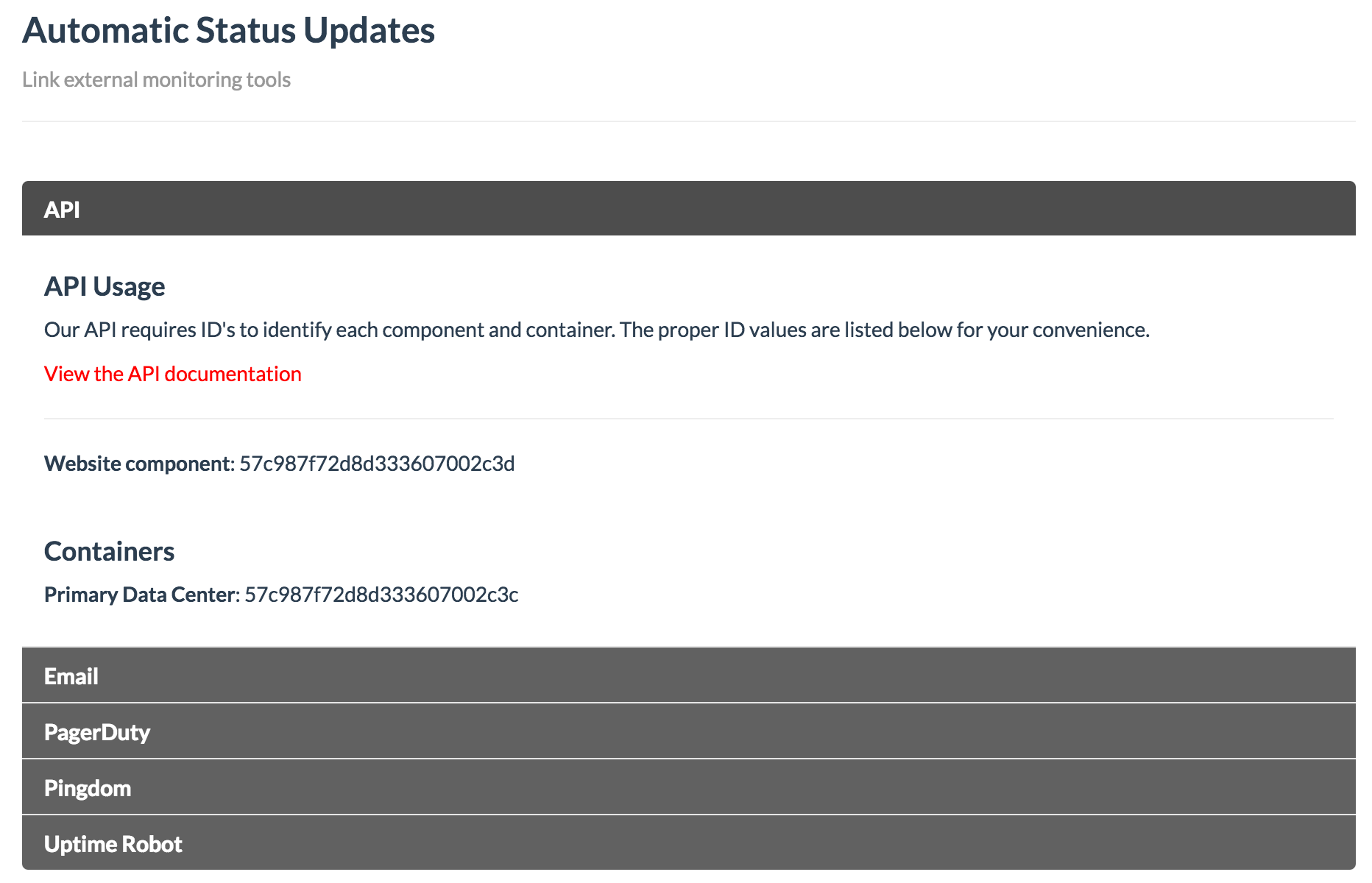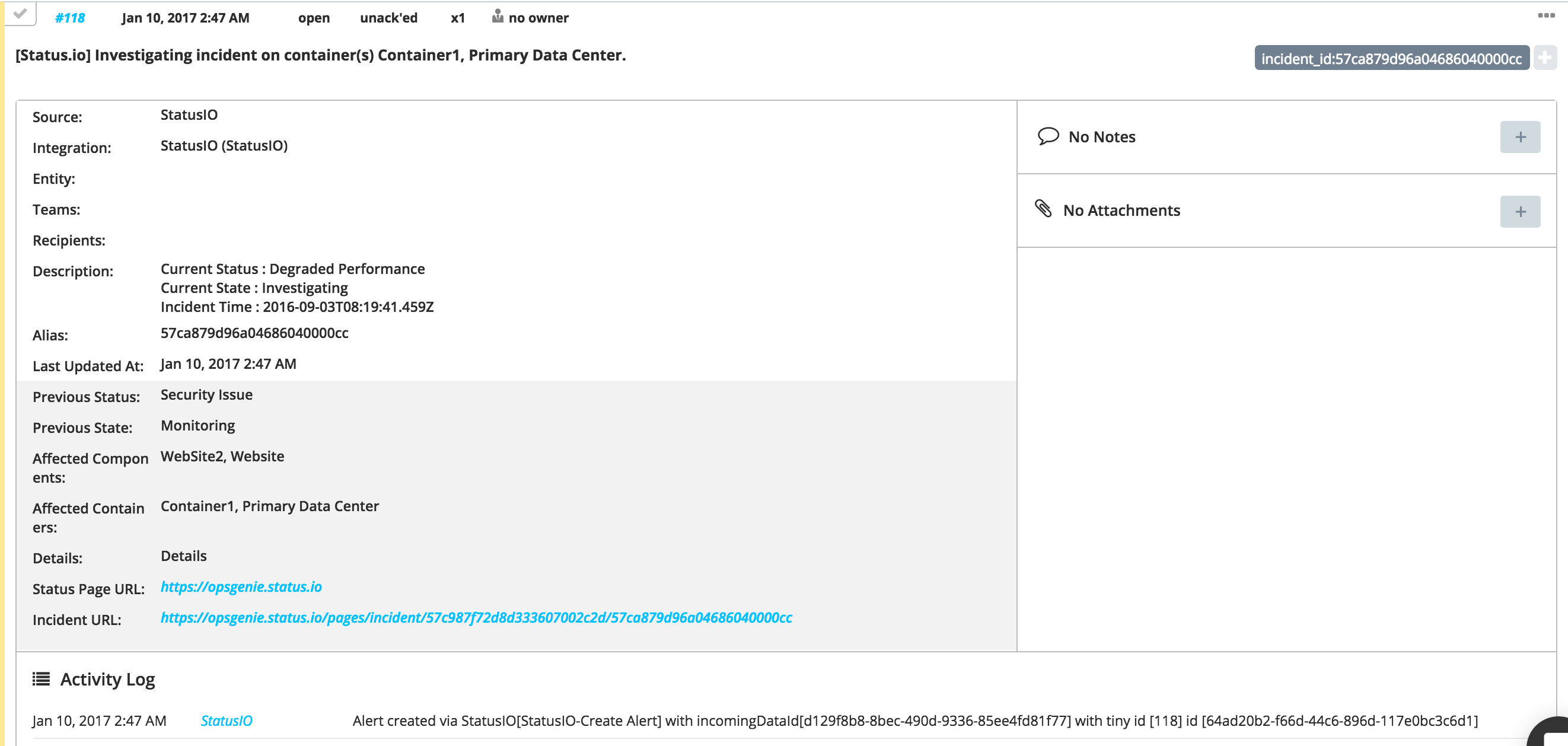Status.io Integration
Status.io is a complete status platform that supplies status pages, incident tracking, subscriber notifications, and more.

What does Opsgenie offer Status.io users?
Use Opsgenie's Status.io Integration to forward Status.io alerts to Opsgenie and Opsgenie alerts to Status.io. Opsgenie determines the right people to notify based on on-call schedules– notifies via email, text messages (SMS), phone calls and iPhone & Android push notifications, and escalates alerts until the alert is acknowledged or closed.
Functionality of the integration
- When an incident is created in Status.io, an alert is created in Opsgenie automatically through the integration.
- When an incident is resolved in Status.io, the alert will be closed in Opsgenie automatically through the integration.
- When an alert is created in Opsgenie, an incident is created in Status.io automatically through the integration.
- When an incident is closed in Opsgenie, the incident will be resolved in Status.io automatically through the integration.
Add Status.io Integration in Opsgenie
- Please create an Opsgenie account if you haven't done so already.
- Go to Opsgenie's Status.io Integration page.
For Free and Essentials plans, you can only add the integrations from the Team Dashboards, please use the alternative instructions given below to add this integration.
- Specify who is notified of Status.io alerts using the Teams field. Auto-complete suggestions are provided as you type.
An alternative for Step 2) and Step 3) is to add the integration from the Team Dashboard of the team which will own the integration. To add an integration directly to a team, navigate to the Team Dashboard and open Integrations tab. Click Add Integration and select the integration that you would like to add.
- To use create/resolve incidents in Status.io when an alert is created/closed in Opsgenie, select the "Send Alerts To Status.io" option.
- Paste the Status.io Status Page ID to the "Status.io Status Page Id" field.
- Paste the Status.io API ID to the "Status.io API Id" field.
- Paste the Status.io API Key to the "Status.io API Key" field.
- Find the Status Page ID, API ID, and API Key information under API tab on the left menu by navigating there and clicking "Display API Credentials" in Status.io.
- Select which actions to perform on the Status.io side via the "Alert Action" option. Select create, close, or both actions.
- Select an alert filter to specify which alerts to forward to Status.io.
- Copy the Webhook URL provided.
- Click Save Integration.

Configuration in Status.io
- In Status.io, enable webhook notifications if not already enabled.
- Select the "Notifications" tab on the left menu in Status.io and then navigate to the Webhook section and click ON/OFF.
- On the status page click SUBSCRIBE.
- Select the "Webhook" tab from the menu on the top.
- Paste the Webhook URL into the first field.
- Type desired email address to the second field.
- Click Subscribe.

Setting Containers, Components, State and Status Information (Optional)
Set extra properties of the alert to inform Status.io which containers and components are affected by the incident. These extra properties are added to the "Extra Properties" field of the alert. If "Containers" and "Components" are set as extra properties, an incident is created only for these containers and components on the Status.io side. If no containers or components are selected, the incident is created for all containers and components.
Here is the list of the extra properties that can be set to change the information that is sent to Status.io:
- Containers (Containers that are affected by the incident.)
- Components (Components that are affected by the incident.)
- Current Status (Current status of the incident.)
- Current State (Current state of the incident.)
Enter the "Containers" and "Components" properties as IDs. To find the Ids of these containers and components, follow the instructions below.
- In Status.io, select "Infrastructure" from the menu on the left.
- Click the Modify button "(>)" of the first item in the "Components" list.
- Select the "API" tab under the "Automatic Status Updates" section.
- Find the ID of the component and the ID of the container that has the component under that tab.
- Repeat the instructions above for each component in the "Components" list to use.

Set the "Current Status" and "Current State" extra properties to set the status and the state of the incident. If "Current Status" and "Current State" extra properties are not set, the incident is created by the default values of the "Current Status" and "Current State", which is 100. Enter the "Current Status" and the "Current State" extra properties as Status Codes.
Incident Status Codes:
- 100 - Operational
- 300 - Degraded Performance
- 400 - Partial Service Disruption
- 500 - Service Disruption
- 600 - Security Event
Incident State Codes:
- 100 - Investigating
- 200 - Identified
- 300 - Monitoring
Here is a sample screenshot from a valid alert that can be forwarded to Status.io:

Sample payload sent from Status.io
{
"id": "57ca879d96a04686040000cc",
"datetime": "2016-09-03T08:19:41.459Z",
"current_status": "Degraded Performance",
"current_state": "Investigating",
"previous_status": "Security Issue",
"previous_state": "Monitoring",
"components": [
{
"name": "WebSite2",
"_id": "57ca82dca530225c6d000085"
},
{
"name": "Website",
"_id": "57c987f72d8d333607002c3d"
}
],
"containers":[
{
"name": "Container1",
"_id": "57ca82d0db69d71f40000083"
},
{
"name": "Primary Data Center",
"_id": "57c987f72d8d333607002c3c"
}
],
"details": "Details",
"status_page_url": " https://opsgenie.status.io",
"incident_url": "https://opsgenie.status.io/pages/incident/57c987f72d8d333607002c2d/57ca879d96a04686040000cc"
}Sample Alert

Updated 7 months ago
